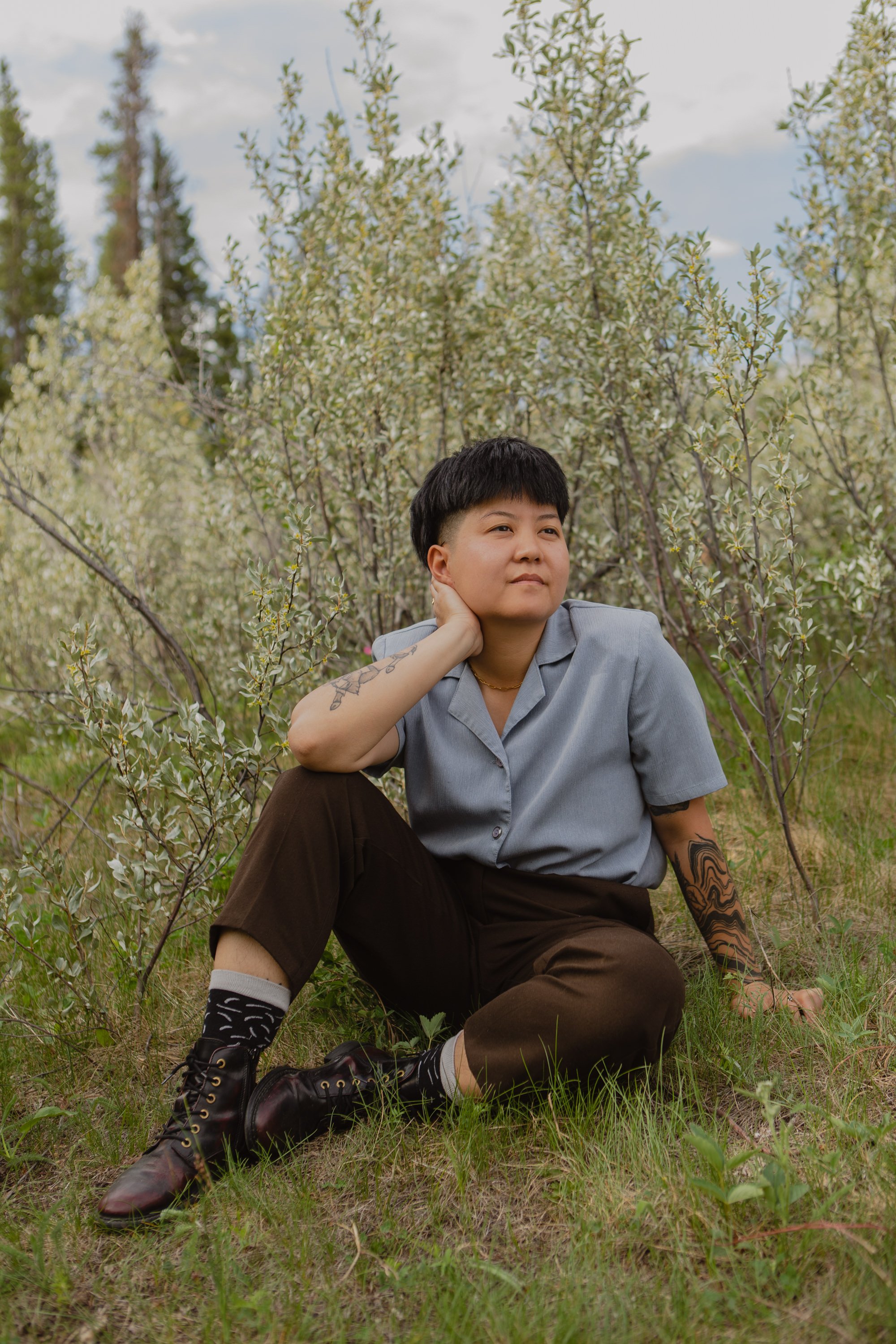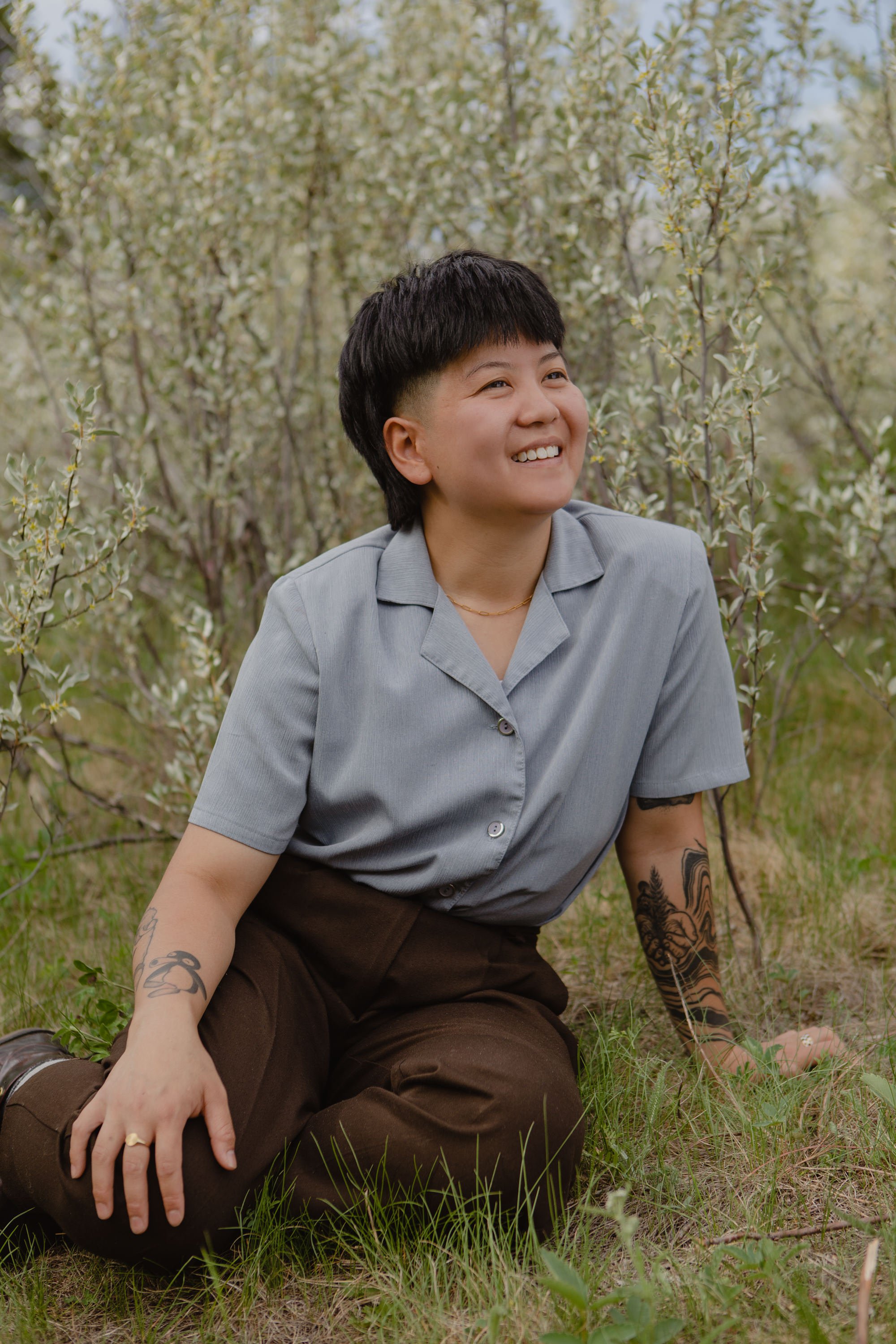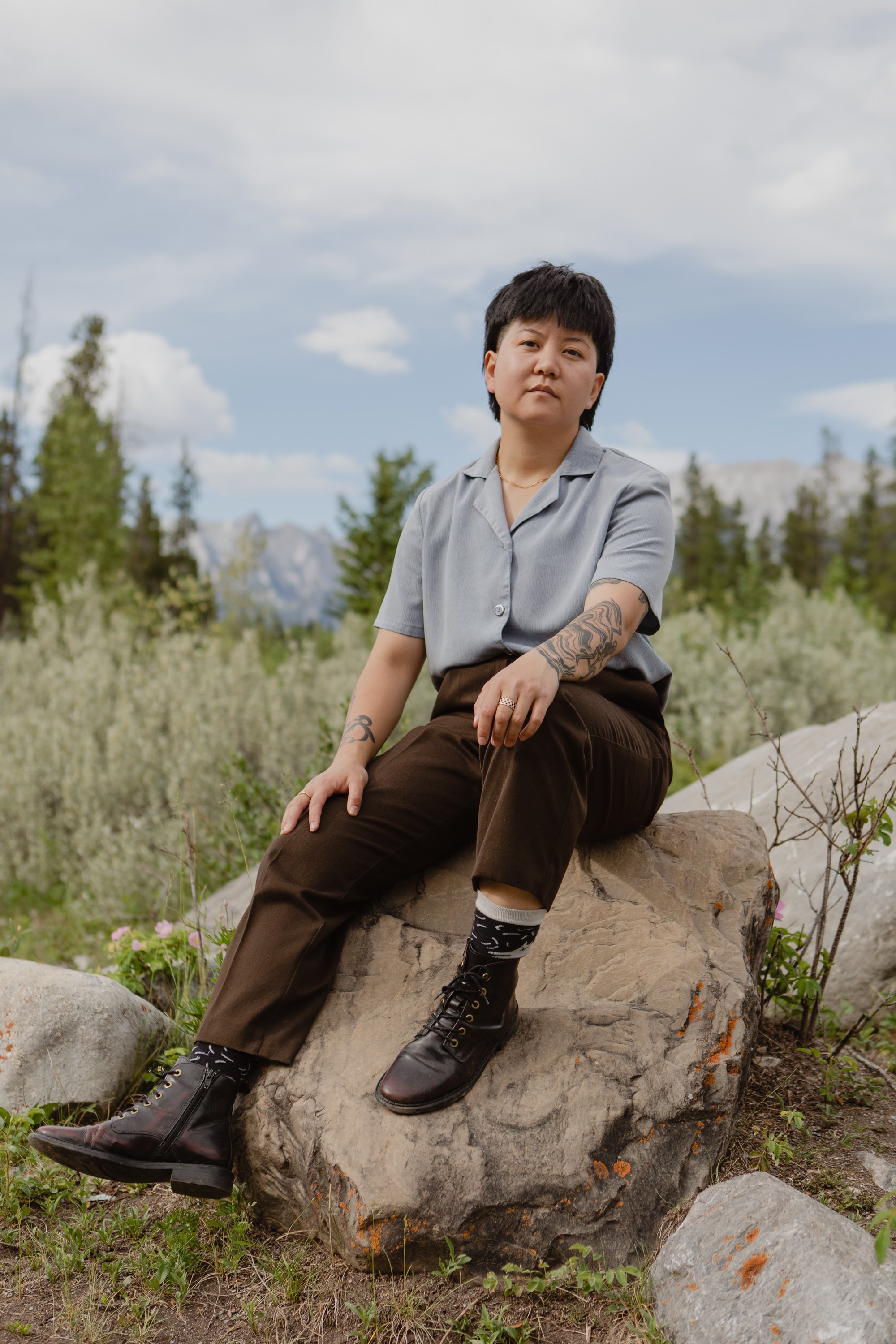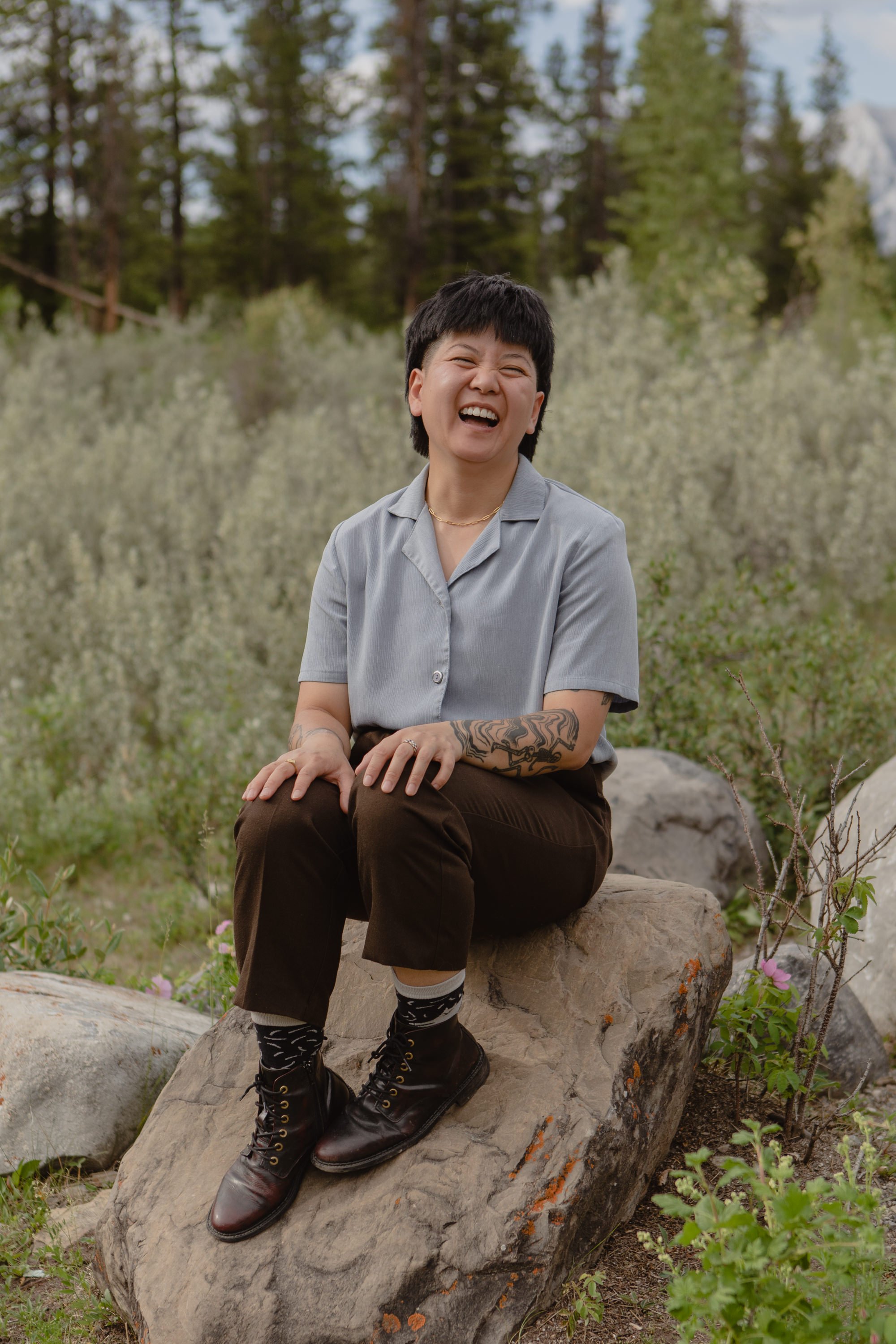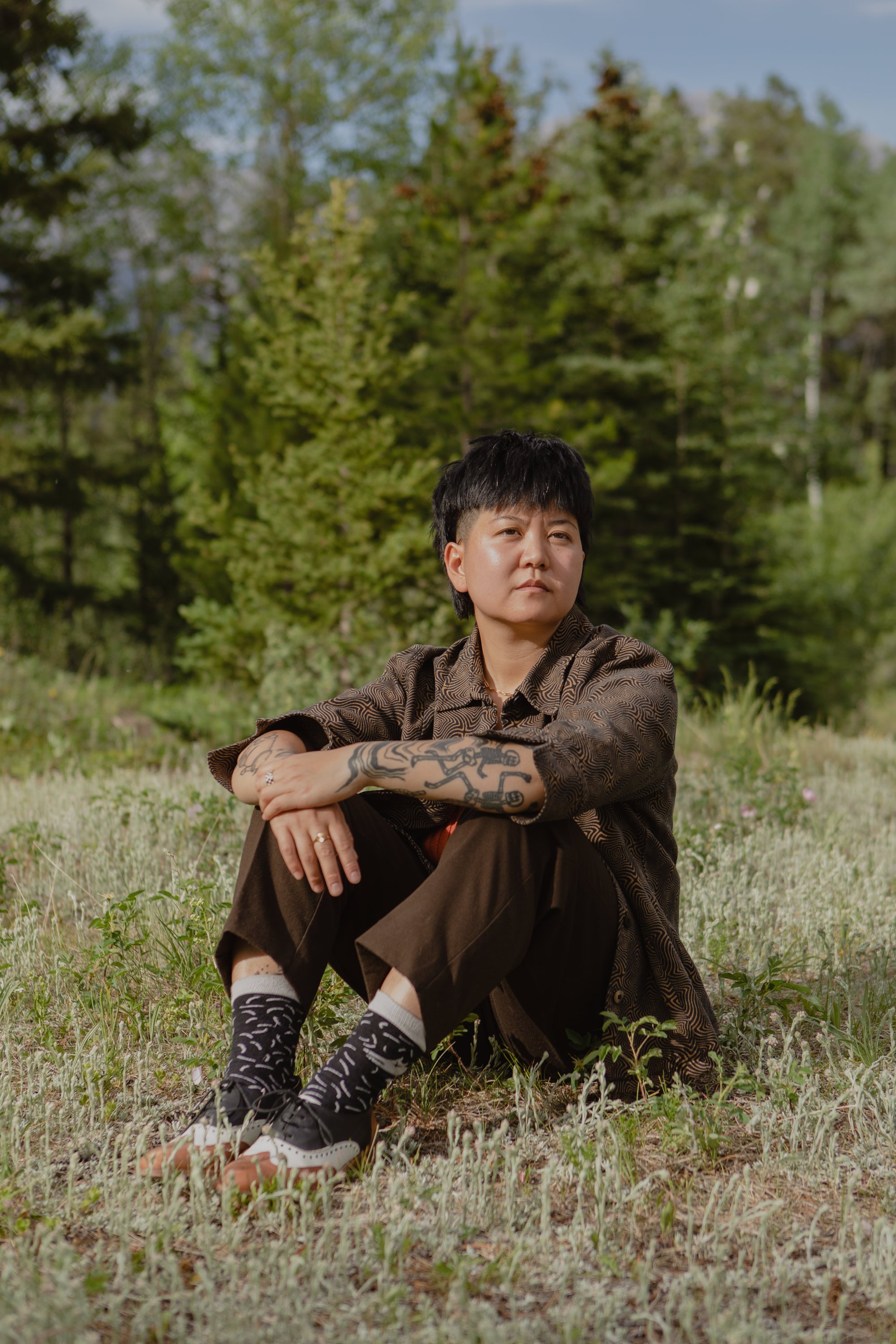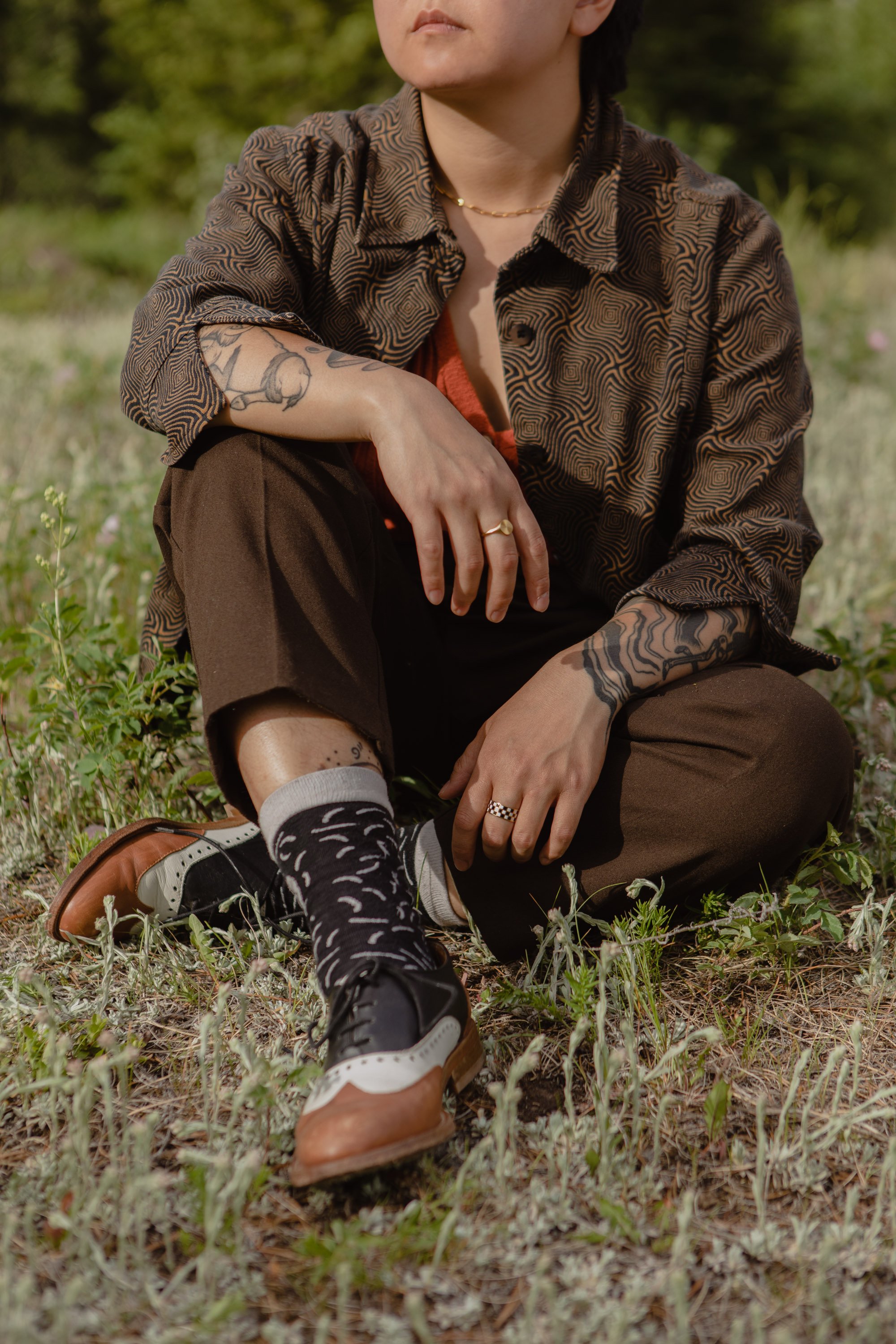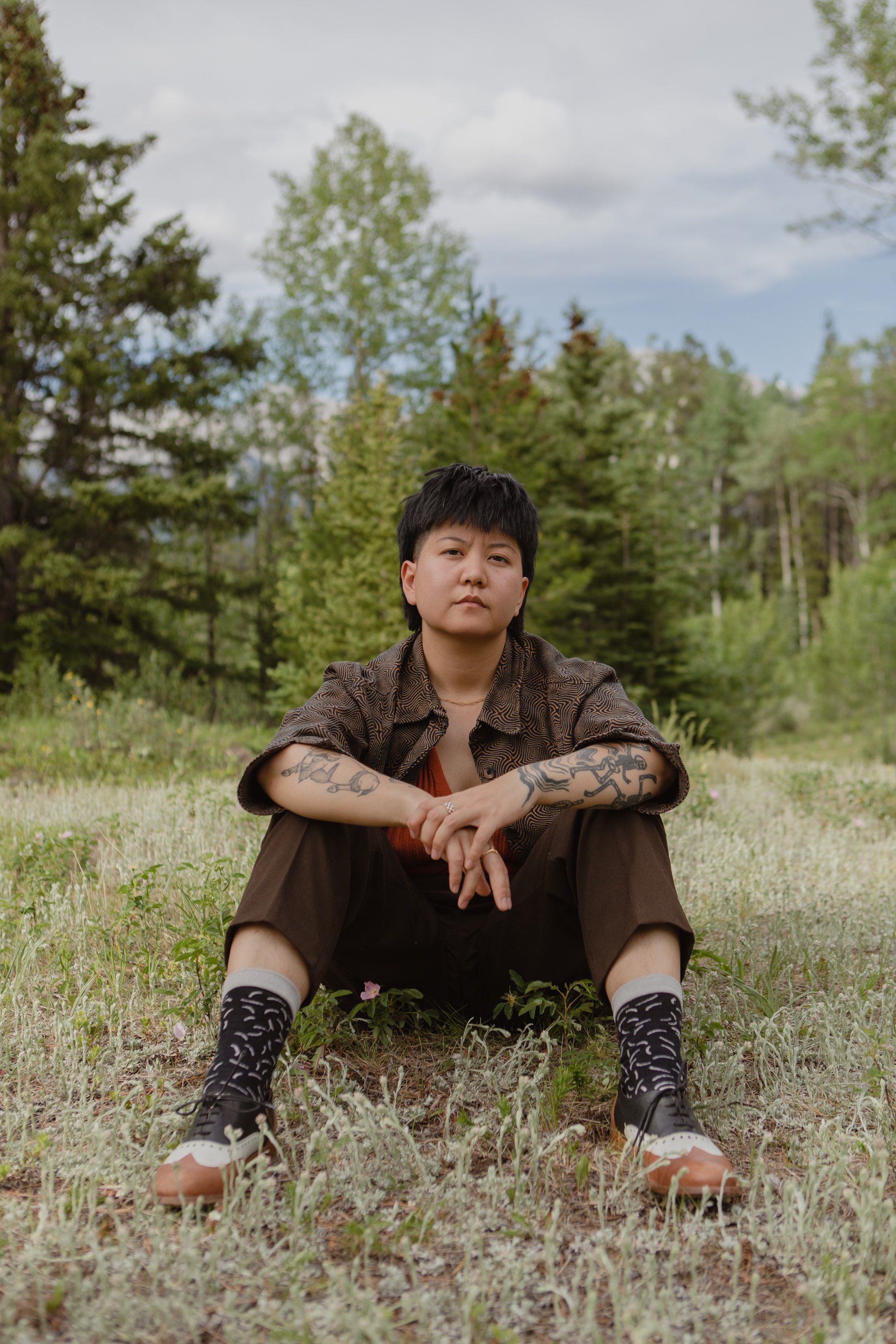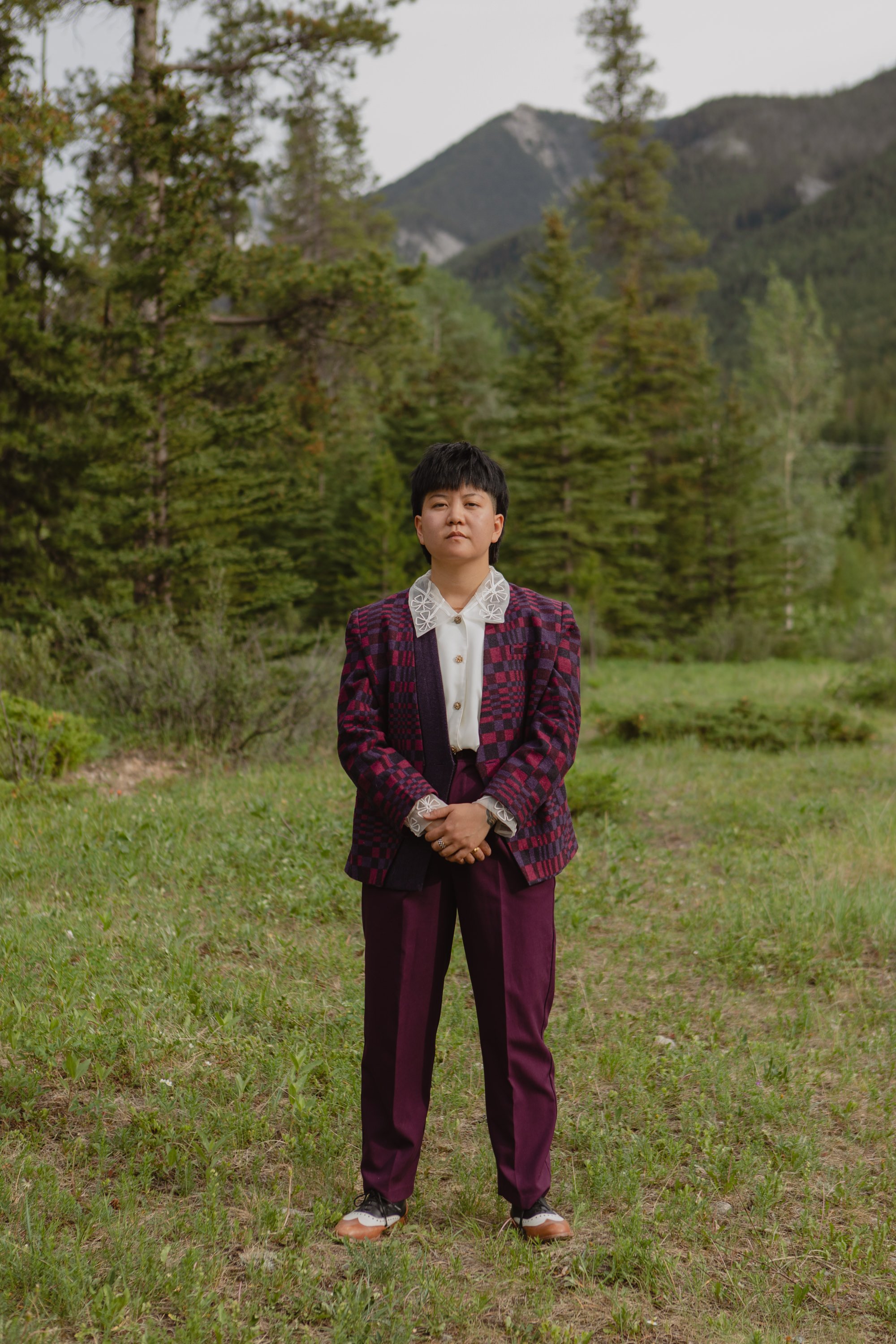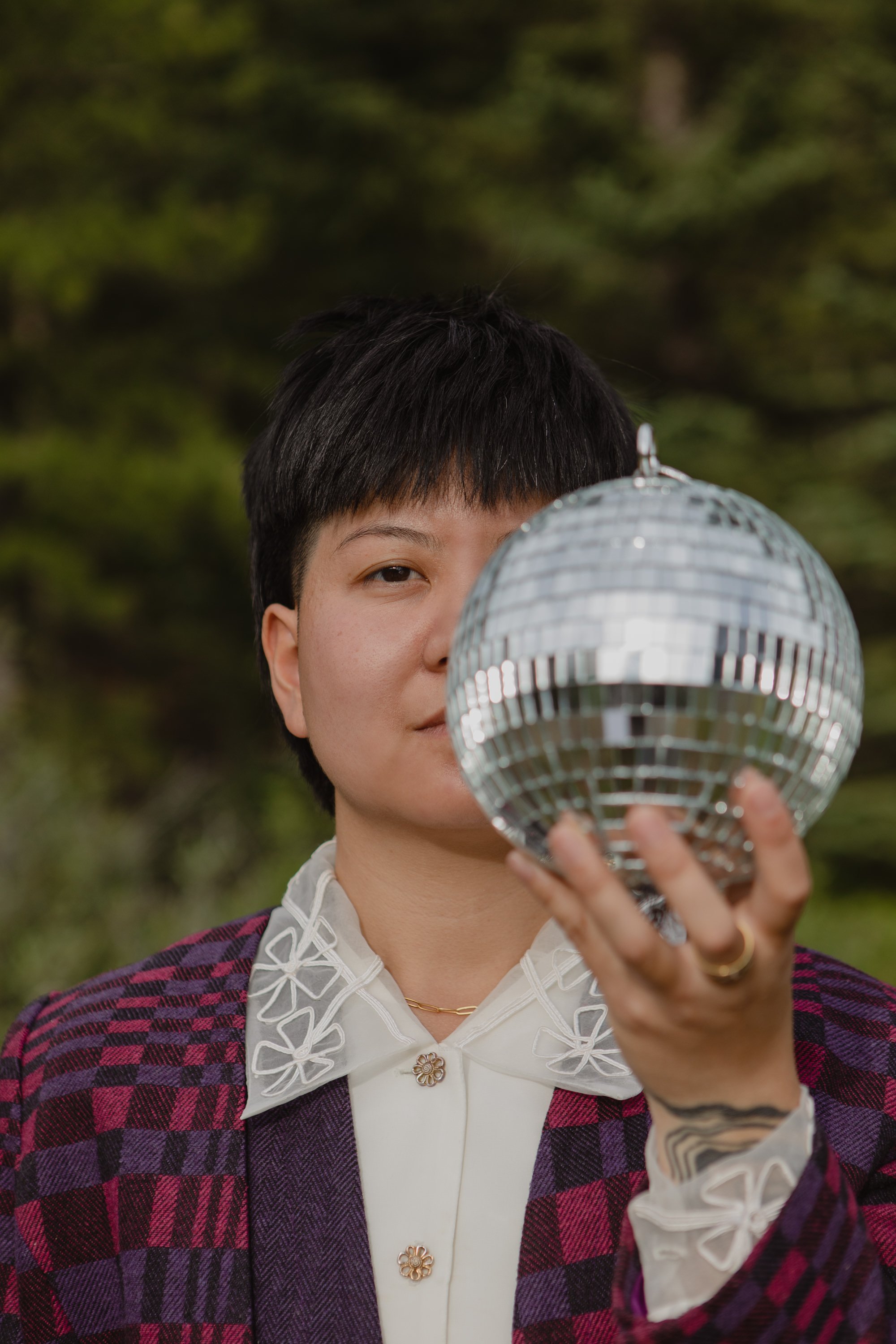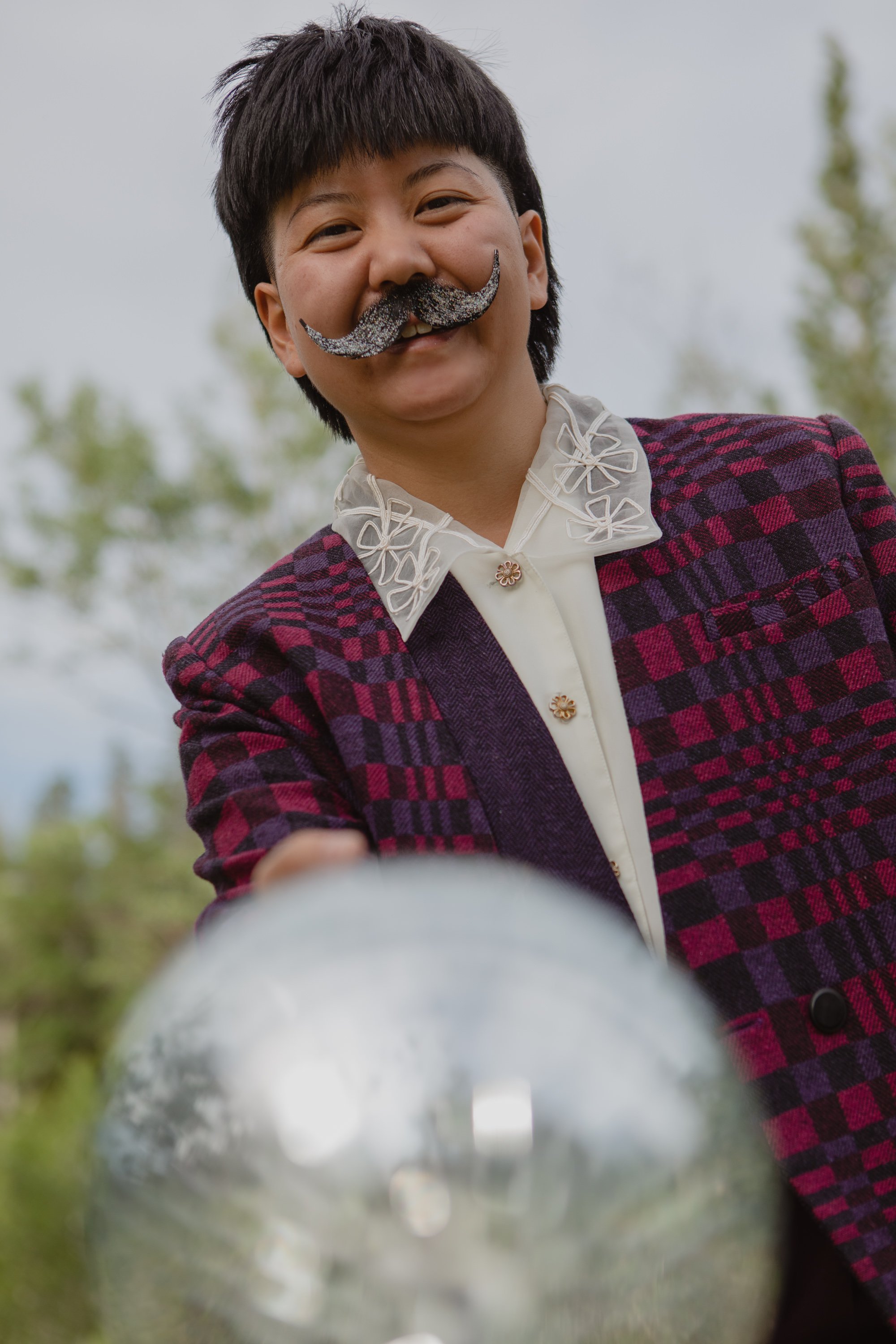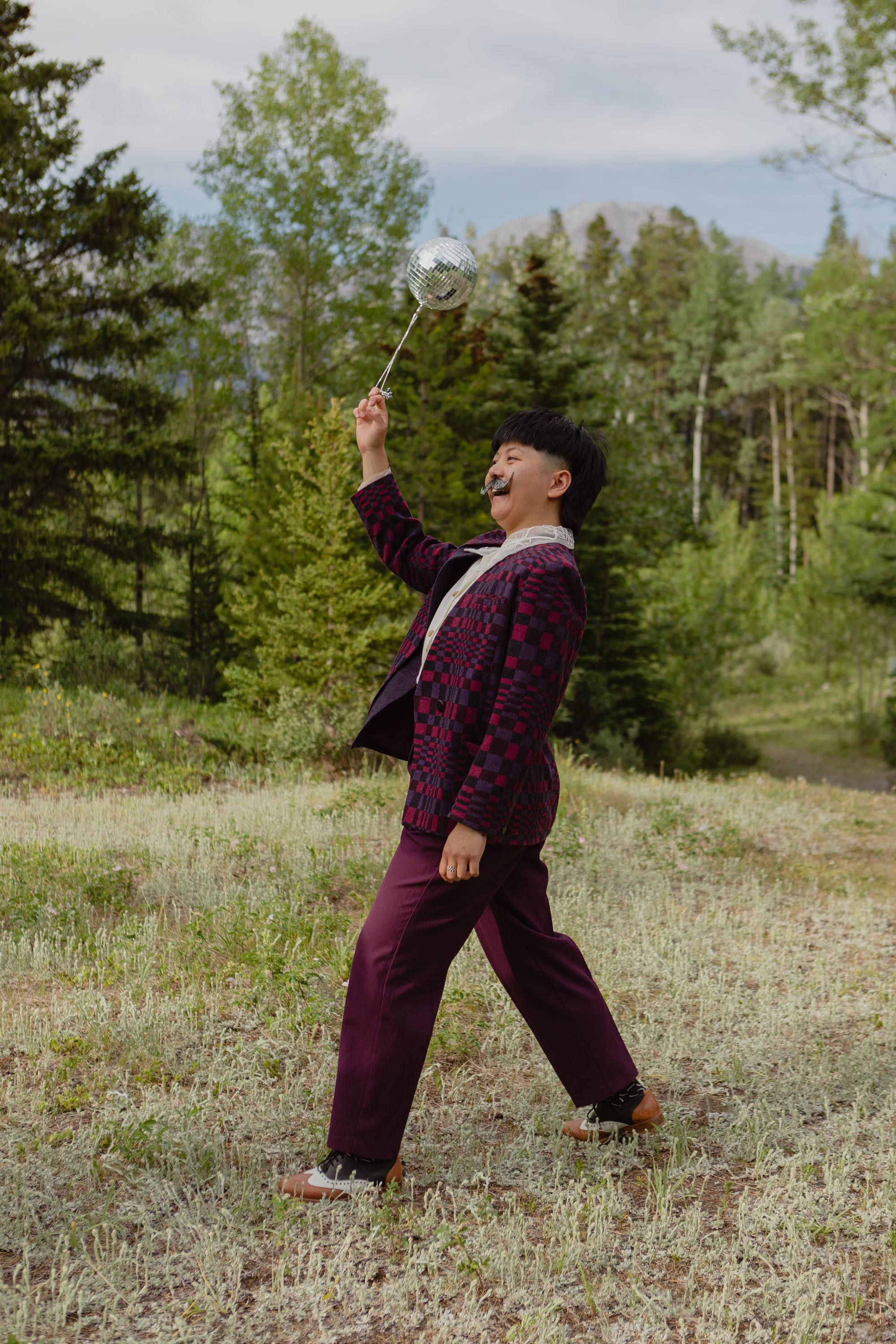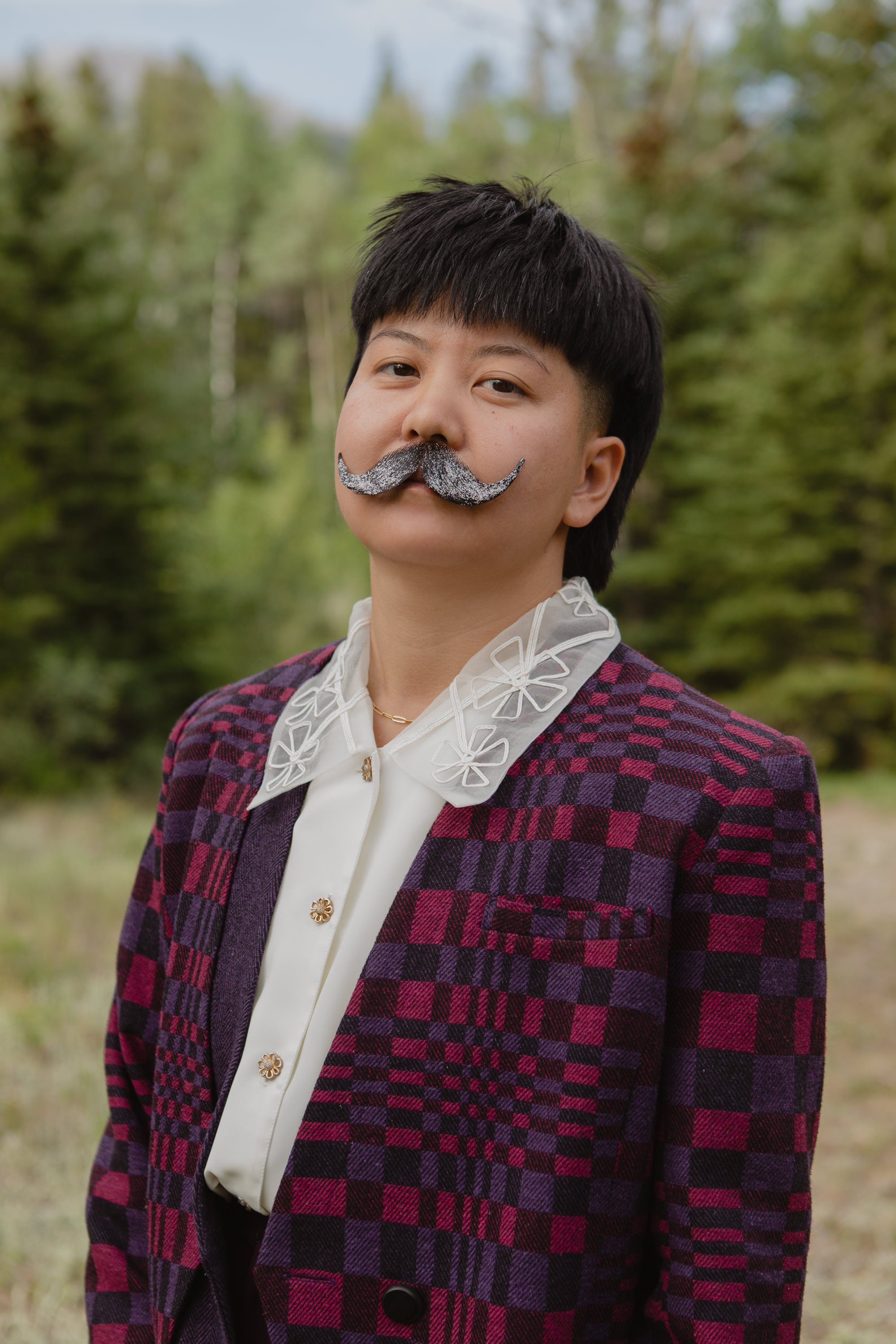Mich.
Mich (they/them), the graphic designer behind Pen Pals Design Co.
I recently had the honour of photographing Mich. Being part of the climbing community in Canmore, as well as being two of few BIPOC folks in our mountain town, Mich and I have crossed paths many times over the years. After their portrait session, I asked them some questions around identity, culture and their personal journey.
My name is Mich and I’m a queer, non-binary, neurodivergent Chinese-Canadian. I am a graphic designer, illustrator, and community builder. When I’m not working, I’m usually spending time outdoors, creating, or with those whom I love.
In what ways have you felt confident in exploring and expressing your gender identity in recent years? Are there any ways in which you have not felt confident?
I’ve spent most of my life trying to fit in. Growing up, I brushed off crushes on girls as people who I wanted to be like, not with. I wore pencil skirts and blouses throughout university because we were taught to dress that way in business school. When my friends made fun of me for being “Janice” (the rumoured lesbian) in Mean Girls, I continuously rejected the possibility. I was uncomfortable but concluded that uncomfortable was my normal.
When I moved to Banff, I started to wear casual clothing, adapting to the mountain town aesthetic. Although I wasn’t playing around with my personal expression, it was my starting point in learning what it meant to be comfortable in my clothes. I started making friends with people who were openly queer who shined a new light on the concept of sexuality. This new normal changed my reflection of my own identity and eventually, I came out as queer.
Non-binary wasn’t always in my vocabulary. The first time I’d ever heard of this term, I was in a van with some peers, listening to them talk about a new non-binary co-worker. They spoke of how ridiculous it was for this person to use they/them pronouns, as if the person’s identity was up for debate. I sat quietly, not knowing what to make of it all.
A few years later, one of my friends also came out as non-binary. This time, it was different. I witnessed my friends fully embrace this person’s identity. For the first time, I was told that being non-binary was something that should be celebrated, not debated.
My partner, Shannon, has fully loved me every step of the way. When I nervously joked about cutting off my long hair for the first time in my life, she only supported me. When I went to Skipping Stone to learn about binders, she crammed into a small closet which we used as a change room, helping me squeeze in and out of different styles. When I started to talk about my gender identity, she regularly checked in with me about my pronouns and asked me how I wanted to be addressed around friends and in public. She has shown me that I am worthy in all my forms.
What have been some of the challenges and joys of identifying as non-binary?
Being non-binary is political. Every time I openly introduce myself with my pronouns, I’m putting myself in a vulnerable position. The existence of trans and non-binary folks’ existence is not up for debate, but that doesn’t mean those back-of-the-van conversations aren’t still happening.
I try to approach it with patience with the understanding that each person’s knowledge of gender may be different but sometimes, it can be hard. I live with an inner dialogue that tells me not to make myself the centre of a conversation; that tells me that I shouldn’t interrupt a conversation to correct my pronouns. What do I do if a friend (who knows my pronouns) misgenders me or calls me the wrong name? What do I do if a server addresses the table as “ladies”? What about when the custodial staff stops me from entering into the men’s washroom, and does the same when I enter the women’s washroom?
There may be challenges, but I wouldn’t change it because I can now feel at home with myself. I’ve gained a lot of confidence in experimenting with different hair, clothing, and even the occasional glitter moustache.
When I look at myself in the mirror I experience joy, knowing that this is me in my truest form.
As a queer Asian-Canadian, how have you experienced living in Canada/the Bow Valley?
I feel like I am caught in between two worlds—neither fully Canadian nor fully Chinese. When I was young, I used to spend countless hours sitting next to my grandma while she played mahjong with her friends. She had a special mahjong table in a specific room dedicated to the game. The distinctive clacking sounds of the tiles are forever ingrained in my memory. I never knew how to read the characters on the tiles, but I knew how to play.
I grew up receiving red envelopes for birthdays and celebrations like Chinese New Year. Before every meal, I was taught to address everyone at the table individually, welcoming them to eat in Cantonese. I spent most weekends going to dim sum, making origami boats out of the paper placemats with my grandaunt, reading the same Chinese zodiac horoscopes to my parents each time.
As I grew older, I lost more of my culture each day. Asian families are known to be strict, and mine was no different. I was disciplined to complete extra homework books and practice piano every day after school. Conversations in broken Cantonese were often around my job, grades, and relationship status (with boys). The more I continued to grow into my own identity, the more I continued to reject the expectations set out by my culture. It’s hard to keep a connection with a culture where queer and non-binary people aren’t openly spoken about.
Moving to the Bow Valley didn’t help. Everyone around me is predominantly white and there isn’t a good, affordable, Chinese restaurant in the whole Bow Valley. It’s not really a place suited for connecting with my Chinese roots, especially if I came here in a time when I already lost a lot of it.
Living in the Bow Valley, it can be difficult to envision myself in the outdoors; this so-called “mountain culture” lacks representation. On top of this, people generally don’t believe that I can be good at something until they see it for themselves. For example, most people feel the need to comment on how good I am at snowboarding, only after they’ve seen it for themselves. It’s always a surprise—never an expectation.
More recently, I’ve started to join activities organized by Colour the Trails, an organization that focuses on bringing BIPoC folks outdoors. It’s been rejuvenating to be in a community that tells you, you belong here. I’m hoping to reconnect with my culture, using this as my starting point. I want to find a way to be all of me—queer, non-binary, Chinese, and active in the mountains.
Why are these portraits important to you?
As I look back through old photos of me, I don’t see an accurate representation of who I am now. It’s an identity crisis each time I need to choose a photo of me to use for things like a portfolio, website bio, or id card.
These photos shine a new light on my identity and allow me to proudly love myself in the present.
